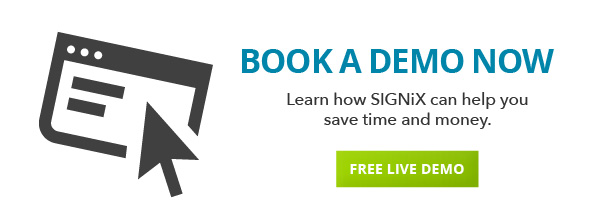At last, you’ve outlined annuity plan options for your client and answered every question he had about each one. It’s time to close the deal. You gather all the necessary paperwork to review with your client, and then you send it off for approval. But the approval process can take anywhere from days to weeks – and what happens if your client’s application is reported to be “not in good order” (NIGO)? You and your client would then start the application process again, losing time while you duplicate your efforts.
Unfortunately, this is an all-too-common occurrence.
Since 2006, the Insured Retirement Institute (IRI) and several other industry organizations – including insurers, providers and distributors – have been working to address the operational challenges the industry faces in processing annuities. This effort initiated Straight-Through-Processing (STP) in the insurance industry—a foundation of principles intended to maximize efficiencies by transitioning manual processes into electronic workflows, with speed, compliance and paper reduction as key objectives.
The Issue of NIGO Documents in Annuity Applications
When an annuity application is returned as NIGO, several resources – including staff and client’s time and the organization’s money – are needed to correct the errors in order to resubmit the application.
In an effort to catch incomplete forms on the front end, organizations may assign team members to check that each paper form is completed in its entirety, signatures are in the correct areas and forms are in good order.
While most of these paper documents likely started in electronic form, if digital technology isn’t consistent end-to-end, it can magnify NIGO issues. For example, a client may have filled out an application on her computer and then printed it in order to sign with a pen. Another client could have scanned and emailed the signed form to its recipient, but the scanned document would then need to be re-keyed into the company’s backend systems, presenting additional opportunities for error.
But what if all those documents remained in electronic form, reducing the risk of incorrect or incomplete data, while simultaneously decreasing the time it takes to rework incomplete forms and to receive, sign and send those documents as well?
The adoption of e-signatures is an initiative within STP, and the IRI Ops and Tech Senior Steering Committee reported that implementing STP has already decreased the occurrence of NIGO applications from 50 percent of all applications submitted to 30 percent, and it could also help capture up to $350 per incident. Why? Because shuffling paper is already expensive. And when almost half of all submitted paper forms are incorrect, causing interruptions in customer plans, frustration with policyholders and support staff and additional time and resources spent on a transaction that should have been completed the first time—the costs quickly add up.
E-signatures alone will play a significant role in recapturing resources and funds that would have been wasted due to NIGO applications.
Decreasing NIGO Applications with E-Signatures
E-signatures can immediately decrease the number of incomplete forms because the technology can require mandatory information and signed fields. That is, the online signing process cannot move forward unless documents are 100 percent complete and correctly signed. This reduces the volume of incomplete documents that are returned to you and the time spent duplicating efforts on revised paperwork.
Plus, e-signature technology automatically scans the documents in real time – eliminating the need for advisors to manually check that all documents are complete before finalizing the transaction.
Having the paperwork completed accurately and in full – the first time – will allow advisors to move their focus to the next project or client awaiting their attention. Supporting staff members can also reallocate their time and resources to more profitable tasks, such as submitting additional applications for approval or taking time to discuss product options with a new client.
Using e-signatures does more than allow you to operate more efficiently. It also saves on paper and shipping costs because all documents are kept in electronic form throughout the approval process. In fact, Tower Group suggested that paper processes cost about 14 times more than doing them in an automated, electronic fashion.
Different Types of Electronic Signatures
There’s no argument that e-signatures will help decrease the number of NIGO applications for insurance and annuities, but it’s important to note that not every kind of e-signature is a good fit for the industry.
There are two principal types of electronic signatures – dependent e-signatures and independent e-signatures. Both are legally acceptable forms of electronic signatures, but the technology behind the two is significantly different.
A dependent e-signature remains on the server of your electronic signature vendor, and the image of the signature is placed on the document. Because the legal evidence of the signature’s validity resides on the vendor’s server, you would need to obtain that evidence if the legitimacy of the signature is ever questioned.
An independent signature – also called a “digital signature” – embeds the evidence of the signature into the signed document itself. Because this evidence is digitally integrated into the signed document, there’s no need to depend on your e-signature vendor to verify the signature if its validity is called into question. You can view the e-signature evidence from any PDF viewer, even without an Internet connection.
Independent digital signatures also use tamper-evident technology to immediately detect any unauthorized changes within the document; robust identity authentication to make sure only authorized individuals have access to documents; and comprehensive, independent audit trails to track and record every part of the signing process.
For insurance and annuity professionals – and their clients – this type of independence is essential to ensure that policies remain valid and sensitive information is kept secure for the longevity of the plan – whether that be years or a lifetime.
To see how e-signatures can prevent NIGO for your business, schedule a free demo now.
%20formatted-1.png?width=2528&height=739&name=SIGNiX%20Logo%20Main%20(white)%20formatted-1.png)

